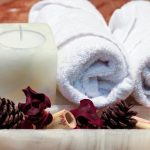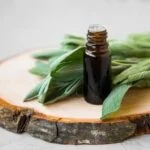Aromatherapy has long been used as a natural way to promote relaxation, improve mood, and enhance overall well-being. One of the most popular methods of enjoying the benefits of aromatherapy is through the use of diffusers. These devices release essential oils into the air, allowing their therapeutic properties to be inhaled and absorbed by the body.
But with so many options available, which aromatherapy diffuser is best? In this article, we will explore the different types of aromatherapy diffusers, their pros and cons, and help you make an informed decision on which one is right for you.
There are various types of diffusers on the market, each with its own unique features and benefits. Ultrasonic diffusers are among the most common choice for users due to their versatility and ease of use. These diffusers break down essential oils into small molecules using ultrasonic vibrations and release them into the air as a fine mist. This method not only disperses fragrance effectively but also helps to humidify the surrounding environment.
Another option to consider is nebulizing diffusers, known for their purity and powerful delivery of essential oils. These diffusers work by creating a pressurized stream of air that blows across a small tube containing essential oil. The resulting micro droplets are released into the air without dilution, making them highly potent and effective for therapeutic purposes.
For those who prefer a more traditional approach, heat diffusers can be a great option. These diffusers use heat to warm essential oils and release their aroma into the air. While heat diffusion may not provide as strong or long-lasting scent as other options, it is still an effective method for enjoying aromatherapy.
Lastly, we have evaporative diffusers which are portable and convenient for on-the-go aromatherapy. These diffusers typically utilize a fan or natural airflow to evaporate essential oils from a pad or filter, dispersing their aroma into the surrounding space. While they may not be as powerful as other types of diffusers, they offer a convenient and discreet way to enjoy aromatherapy wherever you go.
With so many choices available, it’s important to consider your specific needs, preferences, and budget when selecting an aromatherapy diffuser. In the following sections of this article, we will delve deeper into the pros and cons of each type of diffuser, explore different essential oil scents that work well with diffusers, and provide a detailed comparison and review of the top 5 aromatherapy diffusers on the market. So read on to make an informed decision for your aromatherapy needs.
Understanding Different Types of Aromatherapy Diffusers
Aromatherapy diffusers are becoming increasingly popular as people seek natural ways to enhance their well-being and create a pleasant atmosphere in their homes. Understanding the different types of aromatherapy diffusers available can help individuals make an informed decision on which one is best suited for their needs. Each type of diffuser has its own set of pros and cons, allowing users to choose based on preferences and specific requirements.
1. Ultrasonic Diffusers: One of the most popular choices among aromatherapy enthusiasts, ultrasonic diffusers use electronic frequencies to create vibrations that break down essential oils into a fine mist. These diffusers often double as humidifiers, adding moisture to the air for added benefits.
The pros of ultrasonic diffusers include their quiet operation, ability to cover large areas, and the option to customize the intensity and duration of diffusion. However, they require regular cleaning to prevent oil buildup and may not be suitable for those with allergies or sensitivities.
2. Nebulizing Diffusers: Considered the purest form of aromatherapy diffusion, nebulizing diffusers do not require water or heat to disperse essential oils into the air. Instead, they use pressurized air or gas to atomize oils into a concentrated mist. This method preserves the therapeutic properties of essential oils but may result in more rapid evaporation and potentially higher costs due to increased oil usage. Nebulizing diffusers are ideal for individuals seeking strong aromatic benefits without any dilution.
3. Heat Diffusers: Using heat to diffuse essential oils, these traditional style diffusers often rely on electrical heating elements or tea light candles placed underneath a dish containing water and oils. The heat causes evaporation and disperses the aroma throughout the room.
Heat diffusers are generally affordable and easy to use, but they can alter the chemical composition of some delicate essential oils due to high temperatures. They also have a limited coverage area compared to other types of diffusers.
4. Evaporative Diffusers: These compact and portable diffusers work by allowing air to naturally evaporate essential oils from a pad or wick. The oil molecules then disperse into the air, creating a pleasant aroma. Evaporative diffusers are often battery-operated or use a fan to accelerate evaporation. They are convenient for on-the-go aromatherapy but may have a shorter scent duration compared to other types of diffusers.
By understanding the pros and cons of each type of aromatherapy diffuser, individuals can choose the one that best suits their needs and preferences. Factors such as budget, design, features, desired coverage area, and specific health considerations should also be taken into account when selecting an aromatherapy diffuser.
Section Highlighting Ultrasonic Diffusers
Ultrasonic diffusers are widely considered to be the top choice for most users when it comes to aromatherapy. These diffusers work by using electronic frequencies to create vibrations that break down essential oils into micro-particles, which are then dispersed into the air as a fine, aromatic mist. This method of diffusion not only preserves the therapeutic properties of the oils but also ensures that they are evenly dispersed throughout the room.
One of the main advantages of ultrasonic diffusers is their ability to also function as humidifiers. The mist created by these diffusers adds moisture to the air, which can be particularly beneficial in dry climates or during winter months when central heating tends to make the air dry. This dual functionality makes ultrasonic diffusers a popular choice for those who want to enjoy both aromatherapy benefits and improved air quality in their homes or offices.
Another benefit of using ultrasonic diffusers is their ability to provide a quiet and peaceful atmosphere. Unlike some other types of diffusers that use heat or fans, ultrasonic diffusers operate silently, making them ideal for use in bedrooms or meditation spaces where noise reduction is desired. Additionally, many models of ultrasonic diffusers come with built-in LED lights that can provide soft ambiance or serve as a nightlight, adding an extra element of relaxation and calmness to any space.
Nebulizing Diffusers
One of the key advantages of nebulizing diffusers is that they do not require water or heat to operate. This means that the essential oils are not altered or diluted in any way, ensuring that you are getting the maximum potency and effectiveness from each drop. The lack of water also makes nebulizing diffusers more hygienic, as there is no risk of bacteria or mold growth.
In addition to their purity and power, nebulizing diffusers also offer a greater coverage area compared to other types of diffusers. They are able to disperse essential oils over a larger space, making them ideal for use in larger rooms or open areas. Some nebulizing diffusers also come with adjustable settings, allowing you to control the intensity and duration of the diffusion according to your preference.
However, it’s important to note that nebulizing diffusers tend to use up essential oils more quickly compared to other types of diffusers. Since they release undiluted oil directly into the air, a higher concentration is needed for effective diffusion. This means that you may need to replenish your essential oil supply more frequently if you opt for a nebulizing diffuser.
Overall, if you are looking for a powerful and efficient way to experience aromatherapy, a nebulizing diffuser may be the best choice for you. Its ability to release undiluted essential oils into the air ensures maximum potency and effectiveness. However, due to their fast consumption of oils, they may not be the most cost-effective option in the long run.
Heat Diffusers
One of the main advantages of heat diffusers is their ease of use. These diffusers typically consist of a small dish or tray where the essential oil is placed, which is then heated using either a candle or an electric heating element.
Once the oil is heated, it releases its aromatic molecules into the surrounding air, creating a pleasant scent that can fill a room. Heat diffusers require minimal setup and are generally user-friendly, making them great for beginners or those who prefer a straightforward approach to aromatherapy.
Another benefit of heat diffusers is their affordability compared to other types of diffusers. Since they do not require any complex mechanisms or technological components, heat diffusers tend to be more budget-friendly options. It is possible to find high-quality heat diffusers at affordable prices, allowing individuals on a tight budget to still enjoy the benefits of aromatherapy.
While heat diffusers offer convenience and affordability, it is important to note that they may not be suitable for all essential oils. Some delicate oils with low boiling points could lose some of their therapeutic properties when exposed to high temperatures for an extended period.
Additionally, heat can alter the chemical composition of certain oils, affecting their scent and potential benefits. Therefore, it is advisable to research and consider the specific oils you plan to use before selecting a heat diffuser.
Overall, heat diffusers provide an efficient way to enjoy aromatherapy while adding a cozy ambiance to your space. Their simplicity and affordability make them popular choices among users who appreciate tradition and effectiveness in their daily routines. Whether you are seeking relaxation or relief from certain ailments, heat diffusers can be an excellent addition to your aromatic wellness journey.
Evaporative Diffusers
When it comes to aromatherapy diffusers, one option that stands out for its portability and convenience is the evaporative diffuser. These diffusers are perfect for those who are constantly on the go and don’t want to miss out on the benefits of aromatherapy.
Evaporative diffusers work by using a fan or a natural air current to evaporate essential oils into the air. The essential oils are placed onto a pad or filter within the diffuser, and as the air blows over it, the oils evaporate and create a pleasant scent in the surrounding area. One of the advantages of evaporative diffusers is that they do not require heat or water to operate, making them safe and easy to use.
One of the key benefits of using an evaporative diffuser is its portability. These diffusers are typically smaller in size compared to other types, making them easy to carry around in a purse or bag.
They often come with USB ports or battery options, allowing you to use them wherever you go – whether it’s at work, in your car, or even while traveling. The ability to enjoy aromatherapy while on the go is especially beneficial for individuals who need relaxation and stress relief throughout their day.
Overview of Essential Oils
Essential oils play a crucial role in aromatherapy, as they are the main components that create those therapeutic and pleasant scents. When choosing the right scents for your diffuser, it is important to consider both personal preference and the desired benefits you seek from aromatherapy.
There is a wide variety of essential oils available, each with its own unique scent and potential health benefits. Some popular options include lavender, eucalyptus, peppermint, lemon, and tea tree. Lavender oil is known for its calming properties and can help promote relaxation and sleep. Eucalyptus oil has a refreshing scent that can alleviate congestion and promote respiratory health. Peppermint oil offers a cooling sensation and can be used to relieve headaches or boost energy levels.
When selecting essential oils for your diffuser, it is also important to consider any potential sensitivities or allergies you may have. It is recommended to do a patch test before using a new essential oil to ensure that it does not cause any adverse reactions.
| Popular Essential Oils | Main Benefits |
|---|---|
| Lavender | Calming, promotes relaxation and sleep |
| Eucalyptus | Refreshing, alleviates congestion, promotes respiratory health |
| Peppermint | Cooling sensation, relieves headaches, boosts energy levels |
| Lemon | Uplifting, improves mood and concentration |
| Tea Tree | Antibacterial, antiviral, and antifungal properties |
In addition to individual essential oils, you can also experiment with creating your own unique blends. Mixing different oils together can create new scents and combinations that provide an even wider range of benefits. However, it is important to research and understand the potential interactions between different oils before blending them.
By selecting the right essential oils for your diffuser, you can create a personalized aromatherapy experience that suits your preferences and promotes overall well-being.
Factors to Consider When Selecting an Aromatherapy Diffuser
When it comes to selecting an aromatherapy diffuser, there are a few key factors to consider. These factors will help you make the best choice based on your budget, design preferences, and desired features. Here are some important things to keep in mind:
1. Budget: One of the first considerations when choosing an aromatherapy diffuser is your budget. Diffusers come in a wide range of prices, so it’s important to determine how much you’re willing to spend. Keep in mind that more expensive diffusers often have advanced features and may be made with higher quality materials. However, there are also affordable options available that can still deliver great results.
2. Design: The design of the diffuser is another important aspect to consider. Are you looking for something sleek and modern or do you prefer a more rustic or natural look? Additionally, consider the size of the diffuser and how it will fit into your space. Some diffusers are compact and portable, perfect for travel or smaller rooms, while others are larger and more suitable for bigger areas.
3. Features: Different aromatherapy diffusers offer various features that enhance the overall experience. Common features include adjustable mist settings, timer functions, LED lights, automatic shut-off, and remote controls. Think about which features are most important to you and would contribute to your desired aromatherapy experience.
When considering these factors, it’s essential to strike a balance between your preferences and the practicality of the diffuser’s functionality. By doing so, you can find a diffuser that fits within your budget while also meeting your design preferences and offering the features you desire.
By taking these factors into account when selecting an aromatherapy diffuser, you can ensure that you make a well-informed decision that aligns with both your needs and wants for your aromatherapy experience. Whether you prioritize budget, design, or features, there is a diffuser out there that will cater to your specific preferences and enhance your well-being through the power of aromatherapy.
Top 5 Aromatherapy Diffusers on the Market
When it comes to selecting an aromatherapy diffuser, there are a wide variety of options available on the market. To help you make an informed decision, we have conducted a detailed comparison and review of the top 5 aromatherapy diffusers currently available.
1. Ultrasonic Diffusers: Our top choice for most users is the ultrasonic diffuser. These diffusers use electronic frequencies to create vibrations that break down essential oils into micro-particles, dispersing them into the air as a fine mist.
Some advantages of ultrasonic diffusers include their ability to humidify the air, their ease of use, and their ability to cover larger areas. Additionally, many ultrasonic diffusers also come with additional features such as timer settings and LED lights for added ambiance.
2. Nebulizing Diffusers: If you are looking for the purest and most powerful option, then nebulizing diffusers are worth considering. These diffusers do not require any water or heat but instead use pressurized air to disperse essential oils in their purest form.
Nebulizing diffusers create a strong concentration of scent and are ideal for larger rooms or spaces where you want a more intense aroma therapy experience. However, they can be louder than other types of diffusers and may require more frequent cleaning.
3. Heat Diffusers: For those who prefer a more traditional approach, heat diffusers may be the right choice. These types of diffusers utilize heat to gently warm essential oils and release their scent into the air.
Heat diffusion is generally considered safe as no chemical changes occur during the process; however, it’s important not to overheat the oils as it can affect their therapeutic properties. Heat diffusers can be an affordable option but may not be ideal for large spaces due to limited coverage area.
4. Evaporative Diffusers: If you often find yourself on-the-go or need a portable solution, then evaporative diffusers are worth considering. These diffusers use a fan or air current to quickly disperse essential oils into the air.
They are usually compact in size and do not require water or heat, making them ideal for travel or small spaces. However, it’s important to note that evaporative diffusers may not release oils as efficiently as other types and the scent may dissipate more quickly.
By considering factors such as budget, design, features, and your specific needs, you can choose the aromatherapy diffuser that best suits you. Whether you prefer the gentle mist of an ultrasonic diffuser, the power of a nebulizing diffuser, the traditional approach of a heat diffuser, or the portability of an evaporative diffuser, there is an option available for every preference and lifestyle.
Conclusion
In conclusion, when it comes to choosing the best aromatherapy diffuser for your needs, it is important to consider the various options available and weigh their pros and cons. Ultrasonic diffusers are often the top choice for most users due to their versatility, quiet operation, and ability to disperse a fine mist of essential oils. They offer a gentle and consistent diffusion experience, making them suitable for daily use in homes, offices, or even spas.
For those seeking a more powerful and concentrated scent experience, nebulizing diffusers are the ideal choice. These diffusers do not require water or heat, and instead use air pressure to break down essential oils into microscopic particles that are then released into the air. This results in a purer aroma and stronger therapeutic benefits. However, they can be noisier than other types of diffusers and may not be suitable for individuals with sensitivities or allergies.
Heat diffusers offer a more traditional approach to aromatherapy by using heat to vaporize essential oils. They are simple to use and can quickly fill a room with fragrance. However, heat can alter the chemical composition of some essential oils and reduce their therapeutic properties. It is important to choose a heat diffuser that operates at a low temperature to minimize this effect.
Lastly, evaporative diffusers provide a portable and convenient solution for on-the-go aromatherapy. They work by allowing essential oils to evaporate into the air through passive diffusion or with the help of a fan. While they may not offer as intense or long-lasting fragrance as other types of diffusers, they are perfect for small spaces like cars or travel bags.
When selecting an aromatherapy diffuser, it is also important to consider factors such as budget, design, and features. Determine your spending limit and prioritize features that are important to you such as timer settings, LED lights, or automatic shut-off functions.
Frequently Asked Questions
How Do I Choose a Good Aromatherapy Diffuser?
When choosing a good aromatherapy diffuser, there are a few key factors to consider. Firstly, think about the size and coverage area of the diffuser. If you have a large room, you’ll need a diffuser with a higher mist output to effectively disperse the aroma throughout the space. Secondly, pay attention to the diffuser’s run time and water capacity.
A diffuser with a longer run time and larger water tank will require less frequent refilling. Additionally, look for features like adjustable mist settings and timers that allow you to customize your aromatherapy experience. Lastly, consider the design and aesthetics of the diffuser, as it should complement your personal style and blend well with your home decor.
What Is Best Type of Diffuser to Buy?
The best type of diffuser to buy depends on your preferences and needs. There are several popular types of diffusers available on the market. Ultrasonic diffusers use water and ultrasonic vibrations to disperse essential oils into the air as fine mist particles. They are gentle and effective, suitable for most people.
Nebulizing diffusers don’t require water but instead atomize pure essential oils into the air using pressurized air or airflow technology. They provide a more concentrated aroma in shorter bursts and are often used for therapeutic purposes. Evaporative diffusers use a fan or heat source to evaporate essential oils from a pad or filter, dispersing them into the air. They are simple and affordable options but may not distribute scent as evenly.
What Is the Best Mist Diffuser?
The best mist diffuser is subjective as it depends on individual preferences and requirements. However, one highly regarded type of mist diffuser is an ultrasonic aromatherapy diffuser. These devices use ultrasonic vibrations to break down water molecules mixed with essential oils into micro-particles that are then emitted as cool mist or vapor into the air.
The fine mist ensures even distribution of the fragrance in large spaces while also providing added humidity. Ultrasonic mist diffusers often come with adjustable mist settings, timers, and attractive LED lighting options, enhancing the overall ambiance of a room.

Are you looking for a natural way to improve your health and wellbeing?
If so, aromatherapy may be the answer for you.





